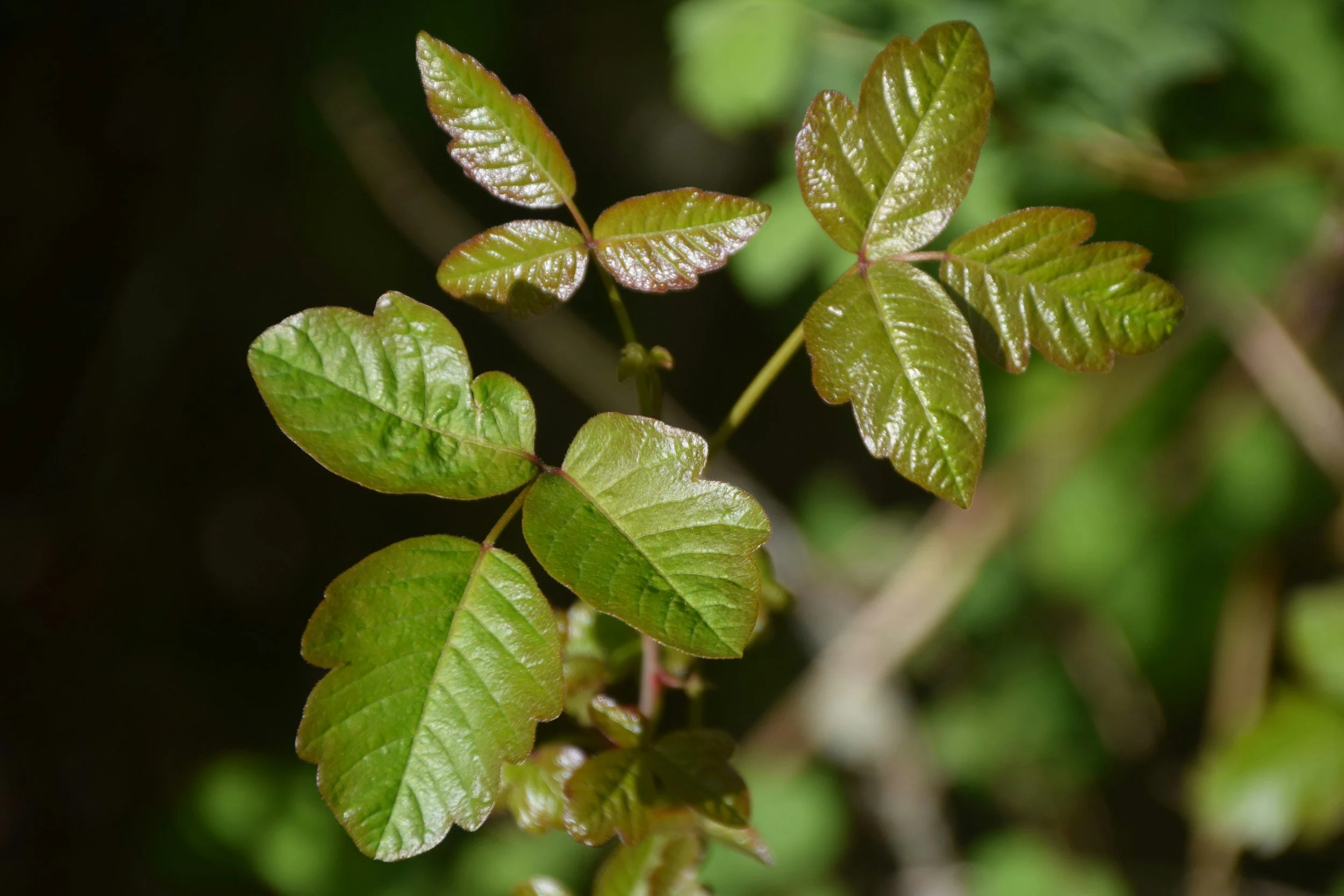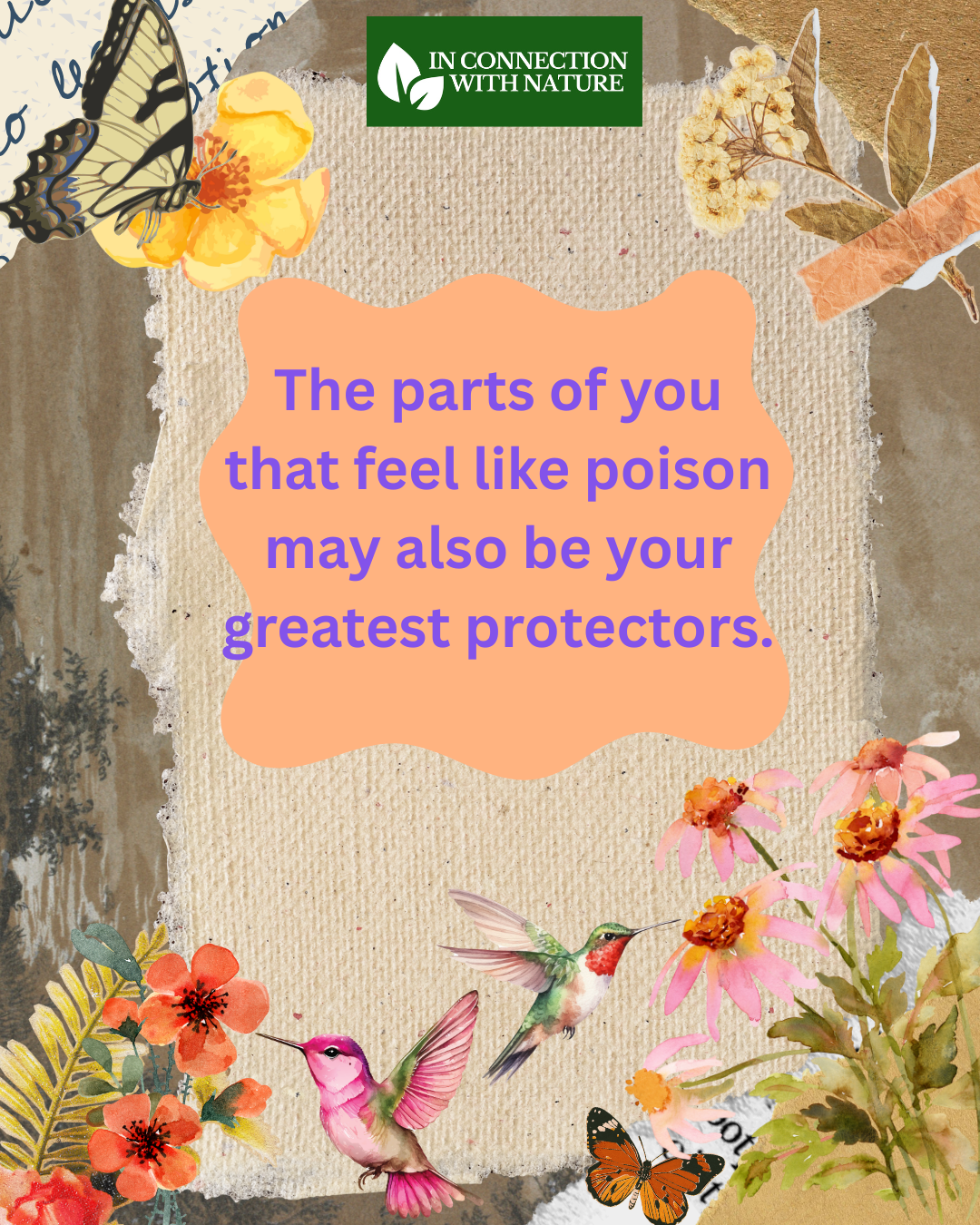One of the locations where I guide my Forest Bathing experiences has a lot of poison oak on one section of the trail. It’s always a great opportunity to explore our relationship with the natural world and consider the relationship we want to cultivate.
Because poison oak can cause an uncomfortable rash, some people can see it as a noxious plant that needs to be removed. Yet in some circles poison oak is known as protector oak because it has so many ecological benefits.
It supports wildlife by providing a home to many forest animals and protection from predators. Many birds eat the berries and deer and rabbits feed on the leaves. It also benefits the soil by increasing its fertility, it’s roots help control erosion, it suppresses invasive species and is a pioneer plant, being one of the first species to grow after fire. In areas where it is native the forest would be much less vibrant and healthy without it.
If we avoid all areas where it exists, we deprive ourselves of some magical places. And to get rid of it because we are only focused on its potential negative effects is detrimental to the ecosystem.
The thing is we do this with a lot of things. Our relationship to people or to a certain dynamic and even with ourselves. Yes with poison / protector oak we want to be aware of the potential impacts and take precautions against that. We can do so while also appreciating and even respecting and admiring its positive qualities.
Poison oak teaches us about discernment and relationship. It can hurt us, yes — so awareness and precautions are wise (learning to identify it, not touching it, respecting its boundaries). Its full truth includes both risk and benefit offering us the opportunity to explore how to best be in “right relationship” with it.
How we Misrelate
We often treat people, emotions, or even inner parts of ourselves the way we treat poison oak. If someone triggers us, challenges us, or brings up discomfort, our instinct may be to avoid or cut them out entirely. And sometimes that is the right call—but sometimes what’s really needed is a boundary that honors both connection and safety, not total elimination.
We do it with dynamics, too. Think of anger or conflict. Many of us were taught these are “bad” emotions, things to avoid. Yet anger can illuminate what matters to us. Conflict, handled well, can bring clarity and honesty. Like poison oak, they have an impact we need to be mindful of—but they also have gifts to offer.
And perhaps most of all, we do this with ourselves. The parts of us we wish would disappear—our anxiety, our self-doubt, our messiness—are often carrying important information. Anxiety, for example, might be protecting us from moving too fast. Self-doubt can invite humility and learning. Even our messiness can be a sign of growth and creativity spilling over the edges.
When we try to rip these parts out at the root, we weaken our own inner ecosystem.
What It Means to Be in Right Relationship
Being in right relationship doesn’t mean blind acceptance, nor does it mean cutting things out the moment they become uncomfortable. Instead, it asks us to:
Respect the power of what we’re relating to.
Be clear about boundaries where they’re needed.
See the whole truth—the gifts and the dangers.
Relate from awareness, not fear.
In right relationship, we recognize that even the prickly or painful parts of life have a role in the larger web.
Expanding the Lens
This perspective goes beyond plants or emotions. Technology can scatter our attention, but it can also connect us across vast distances. Grief can feel unbearable, yet it can also soften us and deepen our connection with others. Money can be corrupting, but it can also be a channel for generosity and creation.
The question is not: is it good or bad? The question is: what is the right relationship I can hold with this?
A Closing Invitation
Next time you walk in the forest, imagine poison oak not as an enemy to destroy, nor as a saint to worship, but as a powerful presence to respect. Explore what relationship you want to have with it and how to best cultivate a healthy relationship. Then bring that same imagination home: What in your life have you been trying to cut out, when perhaps what’s needed is a shift into right relationship?
This week, notice one thing—an emotion, a relationship, a part of yourself—and ask: How can I meet this with more respect, discernment, and balance?
That’s the path of being in right relationship: not erasing, not idolizing, but walking with awareness and care.
And if you’d like support in finding right relationship with the more complicated parts of your inner world, this is the heart of the work I do with clients. Together we explore how to soften judgment, set healthy boundaries, and discover the gifts inside the very things you thought you had to push away.
For those who feel most alive in nature, I also guide retreats in wild places, where we practice these same principles in relationship with the living world—finding wisdom in the forest, the rivers, and yes, even the “protector oak.”
You can learn more about working with me [here] or simply reach out to me here and we’ll start a conversation.
“What you try to cut out may be the very thing protecting the soil of your life.”
“Like the forest, our wholeness depends on honoring even the parts that sting.”
“The quality of your relationships determines the quality of your life.”
— Esther Perel



